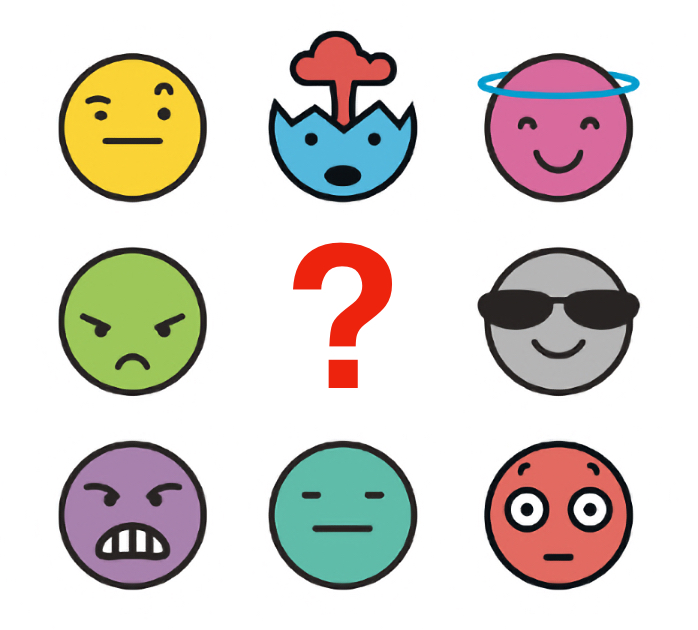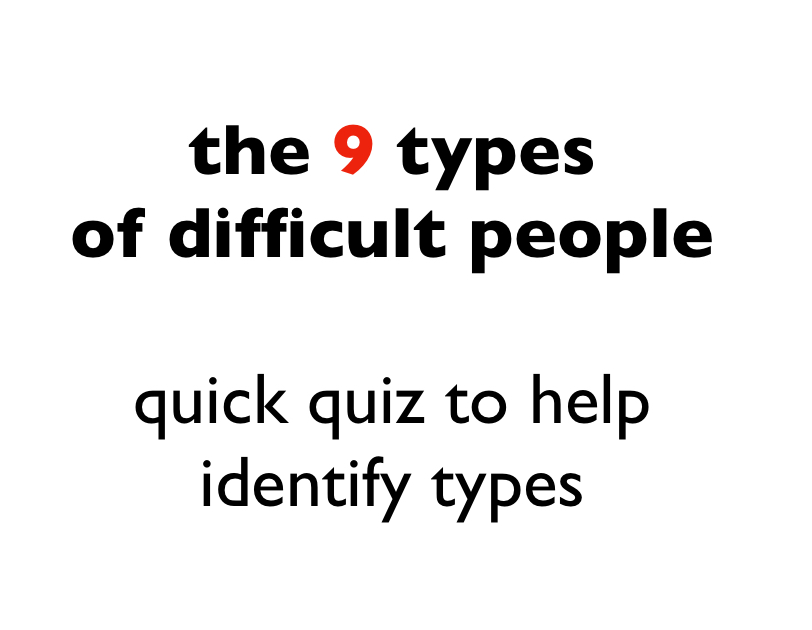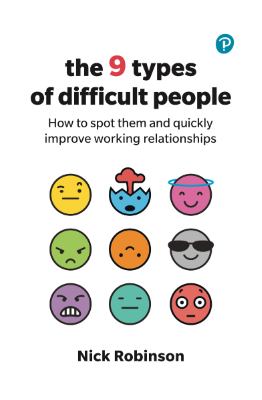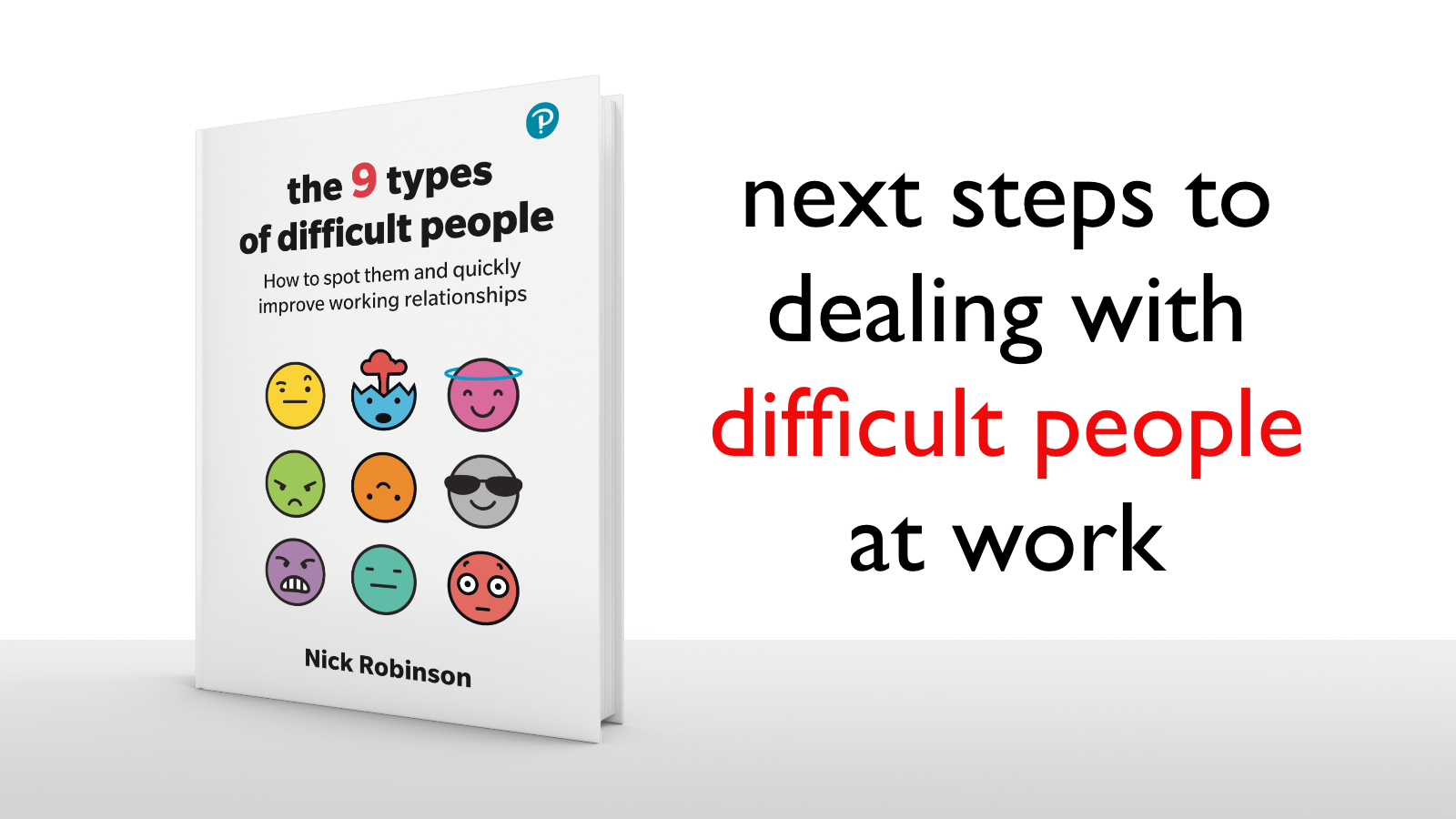Welcome!
On this page you’ll find my Quick Quiz to help you identify the different types of difficult person you might encounter at work.
A complete version of the quiz along with full descriptions of the types can be found in my book, The Nine Types of Difficult People: How to spot them and quickly improve working relationships, published by Pearson.
There’s more information about the book, together with links to its page on Amazon and its own micro-site below. The micro-site is the hub for all the additional resources I’ve created to accompany my book. Please look there and on this current site for more tips, tools and strategies to help you deal with difficult people, tough teams, and other challenging situations at work.
Praise for the Nine types of Difficult People:
“A real gem of a book, full of clear, insightful and practical advice on how to deal with difficult people in a caring and effective manner.”
Bridget Caldwell, BAFTA and double Royal Television Society award-winning Director and Producer
“Compelling reading for anyone leading people. The book offers a practical, easy to understand framework, which will help you diagnose, address and resolve problems.”
Phil Jones MBE, Managing Director Brother UK, an Investors in People Platinum award-winning employer
“I have agonised about certain individuals and what they are doing to upset a high performing team. A book that should be on hand for any leader.”
Tony Attard OBE DL, Chairman of Panaz Group, Master of The Furniture Makers’ Company (City of London livery company), past High Sheriff of Lancashire
Click the picture to see the book on Amazon
A word about ‘Difficult’ People
I hope you’ll grab a copy of my book if you don’t already have one. There you’ll discover more about what I mean by a ‘difficult’ person. It’s important to know that anyone described as ‘difficult’ is almost always someone trying very hard to do their best, in challenging circumstances and in the best and sometimes only way that they know how.
Circumstances, inflexibility of habit, and reactions to stress can make all of us a little tough to be around at times. When that gets to the point where it’s too much for the people around us at work to tolerate – that’s when you might want a resource like my book.
At those times, it can really help to know how to identify what type of difficult person someone has become, so that we can quickly improve working relationships. My goal here is for work to become a place where people can come together and support each other to achieve things that we can’t do on our own. And then everybody benefits.
Instructions for the Quiz
Below you’ll find two groups of descriptions, each with three options: Group One (A, B, C) and Group Two (I, II, III). Read each option in both groups and select the option that best describes the person you are dealing with.
Don’t worry if you don’t agree with every point; focus on the overall description. If you’re not sure, eliminate the least-fitting options in each group and pick the remaining ones.
If you can, bring this person to mind and create a mental image of them. Remember how they made you feel. Think about any other details of their behaviour at work.
You can run the quiz as many times as you want. Start when you’re ready. Press submit when you’re done and the result will appear below. You can use the descriptions that appear to get a good sense for whether you have identified the right type of difficult person.
Quick Quiz to Identify Types
Group One
First, select one option from Group One - A, B, or C.
Group Two
Next, select one option from Group Two - I, II, or III.
Next Steps
In part two of my book you’ll find straightforward tools and tips for dealing with each type of difficult person.
While you’re here, please look around this current site at nickrobinson.org which has tons of useful articles.
Or head on over to my book’s micro-site for more free resources. They’ll help you to get the most out of my book and deal with all kinds of challenging situations, tough teams and difficult people at work.
Good navigating!
Nick
Click the picture to visit my book’s micro-site




